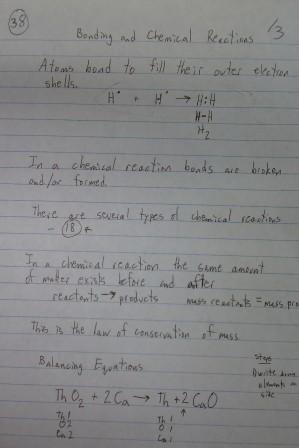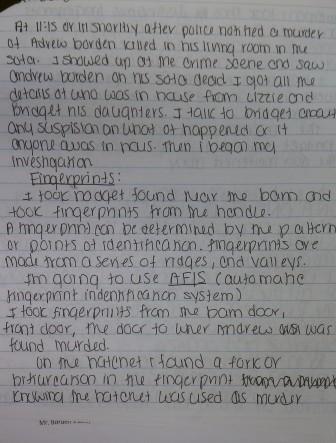http://preparatorychemistry.com/Bishop_versions.htm
I was going to use the above text at the beginning of the year. I did use it for the first month. I found the reading level to be too high for the majority of students in class.
Instead of text based instruction I used notes and short readings from an intermediate level text.
 |
After the third quarter I decided to begin a unit on Forensic Science to try and motivate students. I based my curriculum on materials from this site. Students examined several types of evidence during the unit. For the final exam students had to describe how they would collect, process, and use three different forms of evidence based on a real murder case.
 |
Attendance was a factor in class success. Below are my 12 remaining students, their overall average, and total absences. The emphasis is not so much that poor attendance contributes to poor grades, but that consistent directed instruction is challenging when a quarter of the class is consistently absent.
| Student |
Grade |
Absences |
| 1 |
60 |
24 |
| 2 |
72 |
25 |
| 3 |
73 |
23 |
| 4 |
57 |
42 |
| 5 |
46 |
55 |
| 6 |
72 |
16 |
| 7 |
71 |
31 |
| 8 |
43 |
30 |
| 9 |
49 |
12 |
| 10 |
65 |
88 |
| 11 |
73 |
20 |
| 12 |
70 |
20 |